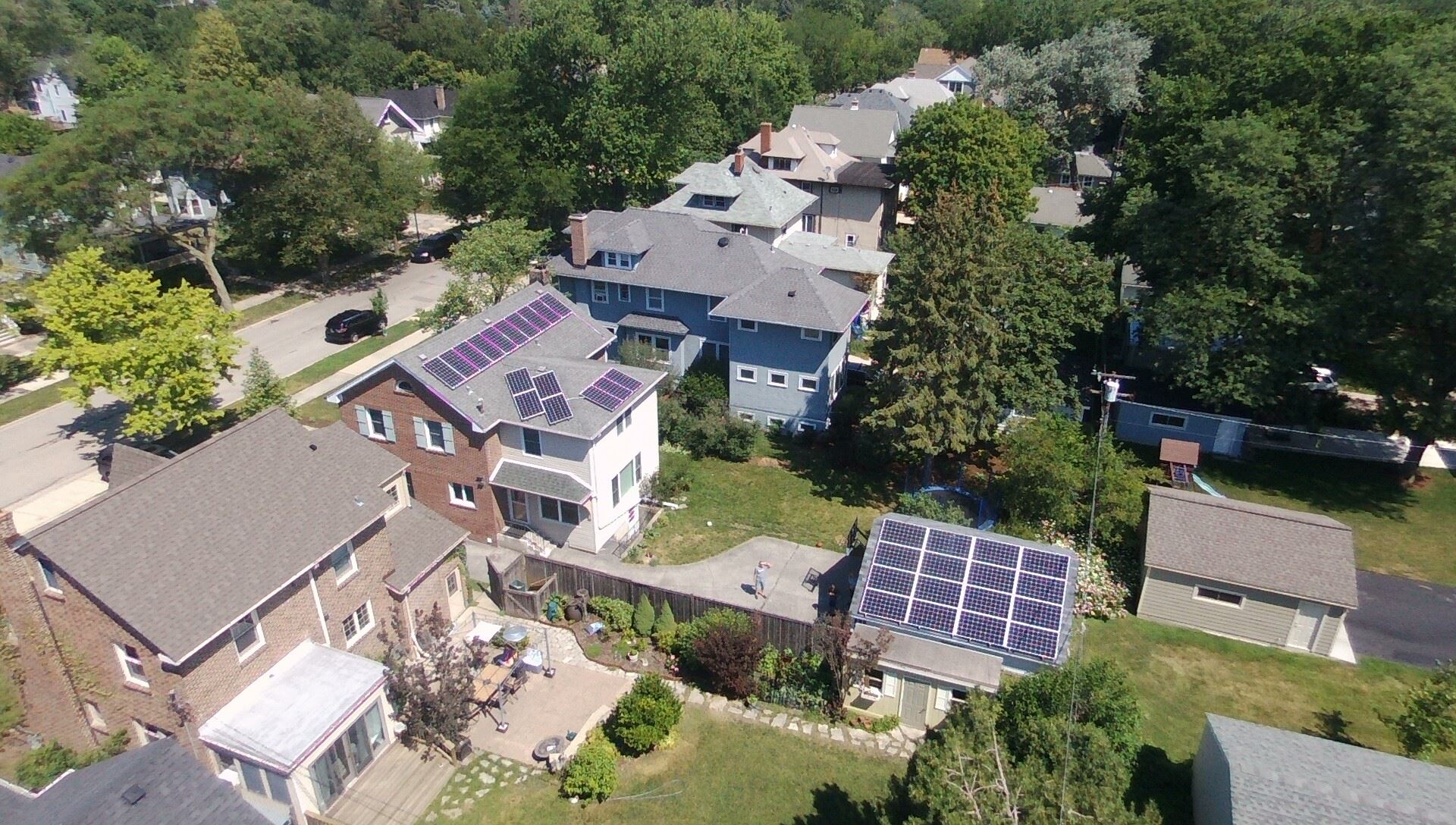Bertold Kraessig
Bertold Kraessig - La Grange, IL
System Details:
To the best of my knowledge this is the first (or close second) solar PV installation in La Grange, IL. It was energized on March 24th, 2017. As of October 2017 there now are three solar PV installations in La Grange, and two of them on my block. I am happy to report that one of my neighbors was inspired by the sight of my PV array that he and his wife decided to install solar on their home. The PV system on my property contains a total of 33 SolarWorld Sunmodule Plus 300 W monocrystalline PV modules with IronRidge racking arranged in four separate arrays, two each facing south and east. The largest of the arrays has 16 modules mounted south-facing on my garage. A second south-facing array with four modules is mounted in an unorthodox way slanted at 45° on the roof of an addition to our 1927 home. A long array with 10 modules and a shorter one with three modules face east on the roofs of the house and the addition. The pitch angles, from steepest to shallowest, are 31° on the roof of the main house, 26° on the garage, and 19° on the addition. Each solar module is connected to a SolarEdge P300 power optimizer and the 33 optimizers are arranged into two strings coupling into the SolarEdge SE7600A-US single-phase inverter. |
|
The complete system has a nameplate rating of 9.9 kW peak DC power. Given the local solar resource, the individual orientations and pitches, the highest AC output power I have observed was around 8.1 kW AC, which is within the 8.3 kW maximum AC power rating of this inverter model. The system is expected to produce 11.7 kWh per year, about 115% of our annual consumption. The overproduction afforded us up to now five $0 electricity bills because we can use net exported excess electricity to pay for the fixed monthly capacity, service and metering charges. As residential solar PV owning customers we will lose any accumulated credit in our account in April.
What made you go solar?
I came of age post Word War II when the dangers of human-made changes to the environment—pollution, nuclear fall-out, DDT, acid rain, etc.—were undebatable and already taught in school. I have long strived to conserve energy and to reduce my carbon footprint on a personal level and I had always thought of solar panels as something to get for our home at some point in the future. When I was confronted with a major turning point in my professional career I decided to pursue something with a potential impact in combating climate change: to promote the broad-based switch from fossil fuels to solar energy. To educate myself in the subject matter and to demonstrate that I am serious about it I decided to start with a solar PV installation for my own home.
Do you have any solar tips?
First, look at your home from the outside. Is there a big tree or building giving your roof a lot of shade? If yes, you can can consider yourself lucky that this shading will reduce your cooling costs in the summer. Shading severely limits the output of a PV module and a roof that receives a lot of shading during the day is not suitable for a solar PV installation. If there is not much shading, does your roof have a lot of dormers, angles or skylights? To fit 10 or more 3-1/2’ by 5-1/2’ solar PV modules onto a roof one needs a sufficiently large continuous roof area facing preferably south, or alternatively east or west.
Second, think about how to pay for it. A solar installation costs about as much as a car. The difference between purchasing a solar installation and a car is that the the solar installation will pay for itself with the current federal and SREC incentives, if you own the system, and electricity bill savings over its warrantied 25 years of production. Just like a car you can buy a solar installation with cash, a loan, or lease it. The break-even point comes earliest when you can afford an outright purchase and treat it as an investment. A “Zero-Down Solar” deal allows you to go solar without the necessary upfront cash but, like any loan, costs you more in payments over the course of the loan term. A lease or “Power Purchase Agreement” is financially the least attractive option for a homeowner.
Third, if you think you have a suitable roof, would like to go solar and know how to pay for it, get quotes from several installers. The installers will need to see a copy of your recent electricity bill to get an idea of your electricity needs. More important than the total cost ($) in a quote are the total cost per Watt ($/W) and the value of the solar renewable energy credits (SREC) that the installer has secured. The proposal with both a low $/W cost and high SREC valuation can then be tweaked to the system size to fit your needs and your budget.
Lastly, talk to someone with experience in this subject who doesn’t want to sell you a system, especially if you want help with any of the above steps.
Contact: (Please specify in the email subject who you wish to communicate with)

